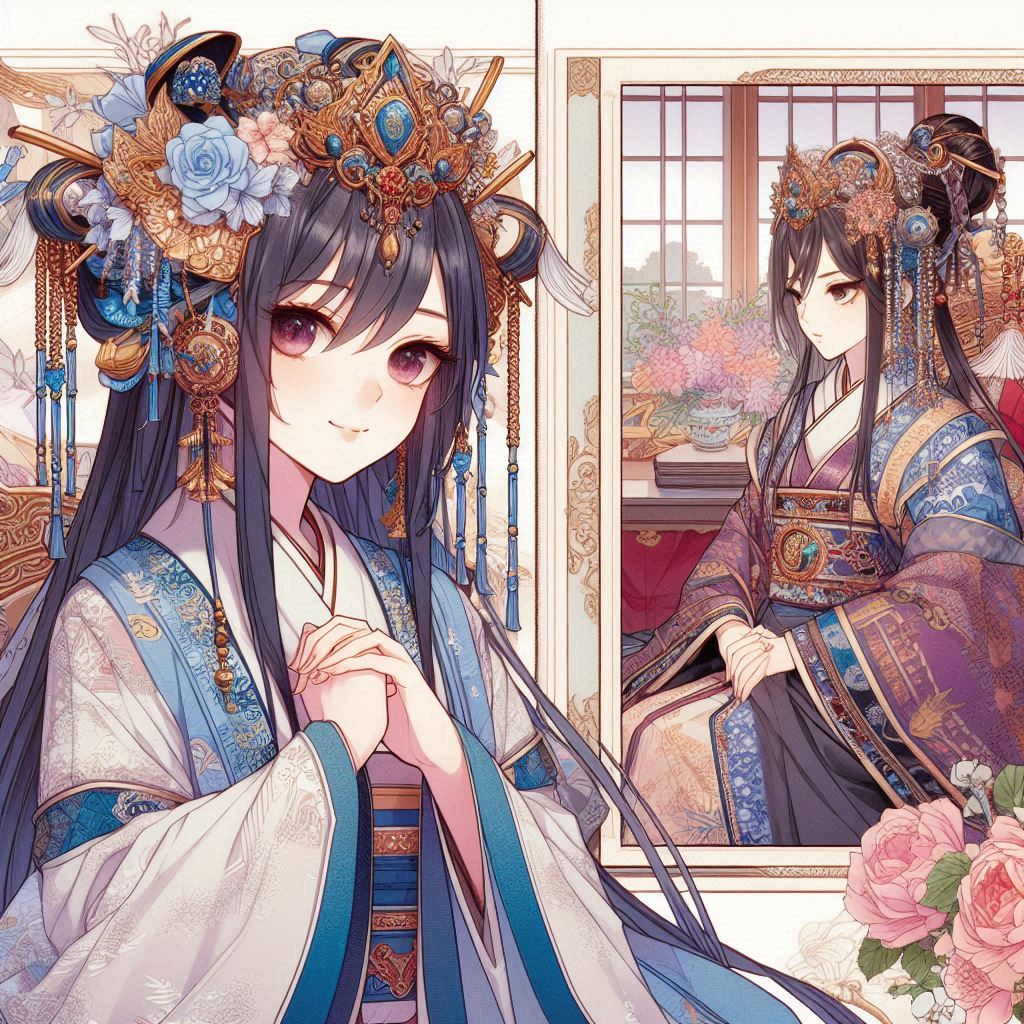Introduction.
The Old Tang Book is a history compiled during the Five Dynasties and Ten Kingdoms period in China, which records the history of the Tang dynasty from its establishment to its downfall. The book also contains descriptions of Japan.
Particularly noteworthy is the fact that the description is divided into two parts: the ‘Biography of Wa-koku’ and the ‘Biography of Nihon’. This indicates that while Japan was recognised as a single country in China, there was an awareness of its historical background and cultural differences.

Differences between ‘Biography of Wa-koku’ and ‘Biography of Nihon’
Biography of Wa-koku: This is a description of ancient Japan, mainly describing events up to the year 648. It describes the expansion of the power of the Japanese state as it subjugated neighbouring states.
Biography of Nihon: This account of the Yamato regime in the Asuka and Nara periods provides a more detailed picture of the situation in Japan, as many parts of the account are consistent with the descriptions in the Nihon-shoki and other books. It describes Japan’s dispatch of envoys to the Tang Dynasty and the deepening of cultural exchanges.
Characteristics of the description of Japan in the Old Tang Shu
Wa-koku and Nihon designations: As mentioned above, the terms ‘Nihon’ and ‘Wa-koku’ are used together. This reflects the fact that Japan was recognised as a single country in China at the time, but its designation was not unified.
Description of Aben-no-Nakamaro: The collection also includes a description of Aben-no-Nakamaro, who travelled to Tang China and was active in the Tang dynasty, which shows the exchange between Japan and Tang China at the time. Abeno Nakamaro was active as a literati in the Tang Dynasty and played a role in introducing Japanese culture to China.
Description of Japanese envoys to Sui and Tang China: there are also descriptions of Japanese missions to the Sui and Tang China. These missions played an important role in promoting cultural exchange between the two countries and enhancing Japan’s international status.
The introduction of Buddhism: the introduction of Buddhism to Japan and its influence on Japanese society is also mentioned.

More information on the description of Japan in the Old Tang Dynasty
- geographical location and natural environment
The Old Tang Shu describes Japan as an island country located in the east of China. Specifically, it is described as being located to the south-east of Baekje (present-day south-west Korea), approximately 1000 ri (500 km) across the sea. The Japanese archipelago is described as mountainous with few plains, and the climate as mild and suitable for agriculture. It is also mentioned as being rich in mineral resources such as gold, silver and copper.
- tributary relations and diplomacy
The Old Tang Book records that Japan sent envoys to the Tang dynasty. In particular, it describes in detail the dispatch of an envoy to the Tang dynasty in 630 with Inukami no Mitasuki as ambassador. This mission was granted an audience with Tang Emperor Taizong, and was a catalyst for the establishment of friendly relations between the two countries. Thereafter, it is recorded that Japan regularly sent envoys to the Tang dynasty and maintained diplomatic relations with the Tang dynasty.
3.Activities of the Japanese envoys to the Tang Dynasty
The activities of the Japanese envoys to the Tang dynasty are described not only as mere diplomatic missions, but also as bearers of cultural exchange. They learnt about advanced Chinese culture, technology and institutions and brought them back to Japan. In particular, it has been suggested that they had a profound influence in areas such as Buddhist and Confucian scriptures, medicine, astronomy, music and building techniques.

- cultural exchange
The Old Tang Book emphasises that Japan actively absorbed Chinese culture. In particular, the introduction and spread of Buddhism is described in detail, and it is mentioned that Buddhism developed under state protection during the reign of Prince Shotoku. It also mentions the significant influence of Confucian thought, which was incorporated into Japan’s political system and education system. Furthermore, the introduction of Chinese characters and the development of Japan’s own kana script are mentioned.
- political system
The Old Tang Shu describes the Japanese political system as a centralised state with the emperor at its centre. The emperor is referred to as ‘Ookimi’ or ‘Tenshi’ and is depicted as an entity with absolute power. The existence of aristocratic government is also mentioned, suggesting that powerful clans had political influence. In particular, the presence of prestigious aristocrats such as the Soga and Fujiwara clans is noted.
- manners and customs
The Old Tang Book also contains interesting descriptions of the lifestyle and customs of the Japanese people. For example, in terms of clothing, it describes men wearing hakama and upper garments, and women wearing long robes. In terms of diet, it describes rice as the staple food and a diet rich in fish and vegetables. There are also references to the cleanliness of the Japanese people and the custom of frequent bathing.

- military and defence
The Old Tang Book also mentions Japan’s military capabilities. In particular, it describes how Japan strengthened its national defence after its defeat at the Battle of Hakusuki River in the late 7th century by the combined forces of Tang and Silla. Specifically, it mentions the construction of large-scale defence facilities (Mizuki) in Kyushu and the development of a nationwide military system (gundan system).
- economic activities
The economic activities of Japan are described as being mainly agricultural and handicraft-based. It is stated that rice cultivation was the main form of agriculture and that handicrafts such as silk weaving and metalworking were also developed. Furthermore, trade activities with China through the Japanese envoys to the Tang Dynasty are also mentioned, with Japan exporting mineral resources such as gold, silver and copper, as well as pearls, and importing silk textiles and books.
- language and script
The Old Tang Book mentions that the Japanese language ‘differs from Chinese, but the script is the same’. This indicates that Japan used a language with its own pronunciation and grammar, while adopting Chinese characters. It also suggests that Japan’s own kana script was beginning to develop during this period.

- Shintoism and religious beliefs
While Buddhism and Confucianism had a significant influence, the Old Tang Shu also mentions Shinto, a religion unique to Japan. In particular, it mentions strong elements of nature and ancestor worship, and mentions the existence of shrines and rituals.
- education and learning
The Old Tang Shu also describes the development of education and learning in Japan. In particular, it states that many books and studies were introduced from China through the Japanese envoys to the Tang Dynasty, which had a great influence on the Japanese intelligentsia. There are also references to the development of National studies and Chinese studies, and the establishment of university dormitories for the training of government officials.

Conclusion.
These descriptions reflect the image of Japan from the perspective of the Chinese in the 9th century. Although not all of them may necessarily be accurate, they are extremely valuable sources for understanding Sino-Japanese relations and cultural exchange at the time, as well as the development of Japanese society and culture. The descriptions of Japan in the Old Tang Book had a major influence on the later New Tang Book and other authentic Chinese histories, and long formed the basis of the Chinese view of Japan.
NB.
This text is based on asking the AI; the AI’s answers may not always be correct. Important information should be checked.
#Asked AI #AI Illustration


